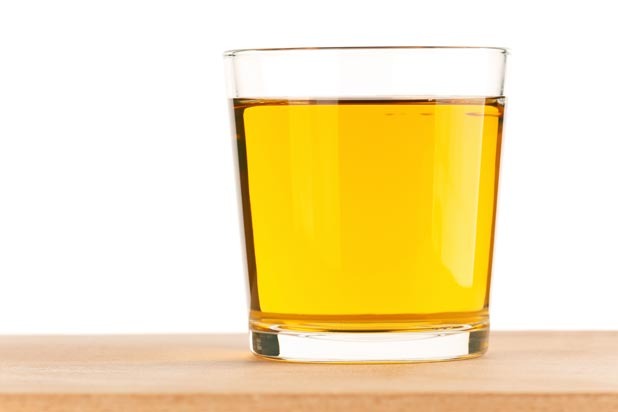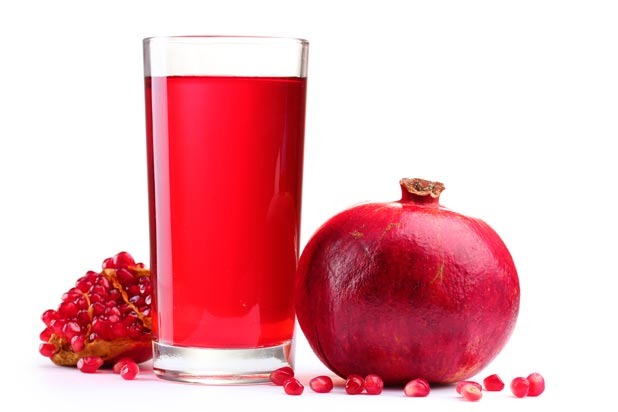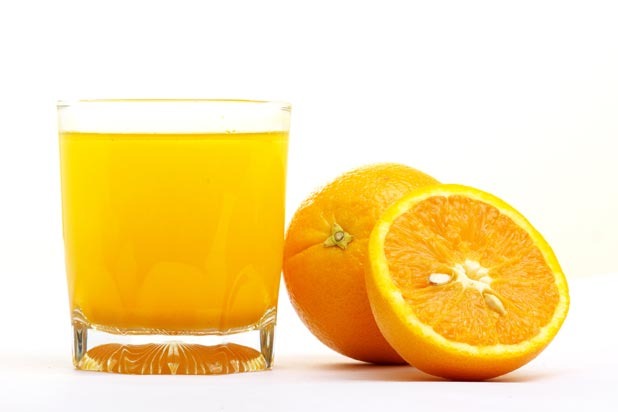Juice Frauds: What's Really In Your Juice Slideshow
The term "100 percent fruit juice" sounds innocent and wholesome, right? Sure — but you have to know what you're looking for. The good news is that 100 percent fruit juice is made purely from the juices of real fruits. And that means you're getting all the antioxidants and vitamins from fruit in one powerful punch. (One study published in the American Journal of Health Promotion even found that kids who drank more than 6 ounces of 100 percent juice had more nutritious diets than their peers.) But there are a few problems with 100 percent real fruit juice: you get way more sugar and calories, for starters. Your glass of 100 percent fruit juice has about twice the amount of calories as a piece of fruit; so, if you're drinking a glass of orange juice, you're getting the caloric equivalent of two to three oranges. And you're not getting the full amount of fiber from 100 percent fruit juice either, as it's stripped away when the juice is processed.
Juice 'Fillers'
You might think that your fruity combination juice is a mix of all your favorite juices — but you're more likely to find apple and grape juices in there. Apple and grape juices are seen as the "fillers" of most juices, because they're cheap to make. So that blueberry-pomegranate juice may contain 100 percent fruit juice of blueberries and pomegranates, but may also have apple and grape juice in it. Pomegranate juice was one of the top "food frauds " found in a recent hot button study of fake ingredients from the U.S. Pharmacopeial Convention. As most versions are often diluted with grape and apple juice, pomegranate juice that's straight-up pomegranate is harder and harder to find. Markus Lipp, senior director for Food Standard, told ABC News, "Pomegranate juice is a high-value ingredient and a high-priced ingredient, and adulteration appears to be widespread... It can be adulterated with other food juices... additional sugar, or just water and sugar." How to avoid that sticky problem? Stick to single-fruit juice (like 100 percent pomegranate fruit juice) and read the ingredients labels very carefully. The higher up the ingredient is on the list, the more you'll find of it — so if your juice has apple and grape way up at the top, you're getting a lot of those from your bottle.
Fake Fiber
Because juicing strips away the fiber from natural fruits, some juice makers add additional fiber back into their products. But some juice makers have been found in the past to add in synthetic fiber, making your wholesome juice not quite so natural. For example, one review of supermarket juices published by the nonprofit watchdog Center for Science in the Public Interest (CSPI) found that Welch's 100 Percent Grape Juice with Fiber (which suggests that one serving can give you 10 percent of your daily needs in fiber) was made with maltodextrin, an additive that acts more like a starch-like carbohydrate. However, the study said, the label advertised that the fiber came from the whole grapes, and not an additive. One other juice maker that came under fire for fake fibers? Naked Juice. In 2011, a lawsuit was filed against the company for misleading language on the labeling that ignored the "added synthetic compounds," like "Fibersol-2 (a proprietary synthetic digestion-resistant fiber produced by Archer Daniels Midland and developed by a Japanese chemical company), fructooligosaccharides (a synthetic fiber and sweetener), and inulin (an artificial and invisible fiber added to foods to... increase fiber content without the typical fiber mouthfeel)." You can still find maltodextrin on the ingredient list for Blue Machine Naked Juice.
Artificial (and Natural) Colorings
This one is almost a no-brainer: certain juices will contain dyes in them. The one under the most fire is Red 40, a dye that was linked to childhood ADHD (the link was later disputed by the FDA); another one, Yellow 6, was found in several brands of orange juice in one study. The CSPI points out that these bright colors in juice can often mask what's really in your drink — so you might think you're drinking a berry juice that's really just bright red because of the dye. Of course, that doesn't mean natural colorings are that much better for you. Take the Starbucks debacle when it was found to be using cochineal coloring for its Strawberry Frappuccinos — beetles may be natural, but we don't want them in our juice. And as some point out, using additives like beet concentrate or carrot concentrate for color can cause big problems for those with food allergies, so it's best to read those ingredient labels carefully.
'Flavor Packs'
This last one has everyone talking: ethyl butyrate, one ingredient you might see on your juice ingredient label, is better known as the "flavor pack" that makes your juice so appetizing. Tropicana Juice is one such company to come under fire (and lawsuits) for using flavor packs in orange juice to give it a "distinctive" and consistent taste. As Food Renegade explains: "When the juice is stripped of oxygen it is also stripped of flavor-providing chemicals. Juice companies therefore hire flavor and fragrance companies, the same ones that formulate perfumes for Dior and Calvin Klein, to engineer flavor packs to add back to the juice to make it taste fresh. Flavor packs aren't listed as an ingredient on the label because technically they are derived from orange essence and oil. Yet those in the industry will tell you that the flavor packs, whether made for reconstituted or pasteurized orange juice, resemble nothing found in nature."Coca-Cola's Simply Orange juice is another such example of a product "made with an algorithm." The "Black Book" model, Bloomberg recently revealed, is how Coca-Cola can replicate the same taste of orange juice despite the variables of juice production — using "natural fragrances and flavors."
Mold
Capri Sun recently made waves when mold was found in its kid-friendly juices — and not just a little bit of fungus. But Capri Sun is hardly the only juice lately to have been found to have levels of mold and fungus. Two other juices recently recalled? Wegmans Food You Feel Good About Organic Apple Juice and Wegmans Food You Feel Good About Organic Cranberry Juice Blend (found to contain pantulin), and Winn-Dixie Organic 100 percent Apple Juice. While the authors of the study on Capri Sun said the fungus levels weren't high enough to be dangerous, it still doesn't make us crave a juice pouch. And you know, maybe check your juice cartons, just in case.
Sodium Benzoate
Sodium benzoate isn't all bad; it's a naturally occurring salt found in many fruits and vegetables. The problem is that it's often used as a preservative as well, which means it often shows up in fruit and vegetable juices. Wisegeek notes that the FDA allows 0.1 percent benzoate in foods, and that it's not been shown to be a harmful ingredient. But some studies have raised concern that when benzoate is mixed with vitamin C, it turns into benzene, a known carcinogen. It's best to be wary when you see sodium benzoane on the label; better start drinking those fresh-pressed juices.
And speaking of sodium, if you're drinking anything but a freshly made vegetable juice, you should definitely be checking the sodium content on the nutrition label. Vegetable juices, such as the well-known V8 juices, are known sodium bombs. Those vegetable juice cocktails can have up to 480 milligrams of sodium in one cup.
Casteoreum
Just be glad we didn't show you exactly where this "natural flavoring" comes from. Much like the controversy surrounding cochineal extract, we expect castoreum to start a debate. Castoreum, used to make raspberry flavorings in ice creams, Jell-O, candy, fruit flavored drinks, teas and yogurts, and — you guessed it — fruit flavored drinks and teas, castoreum comes from a beaver's anal glands. Rodale notes that companies don't have to state where their natural flavorings come from so, you know, you've been warned.

